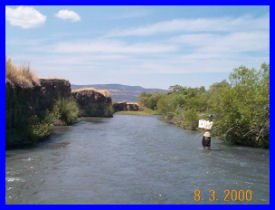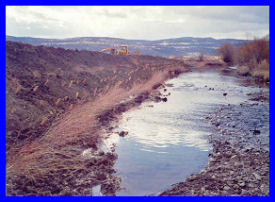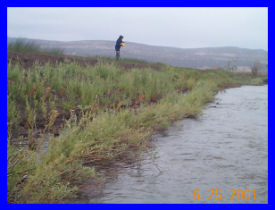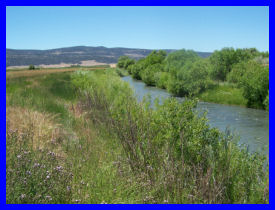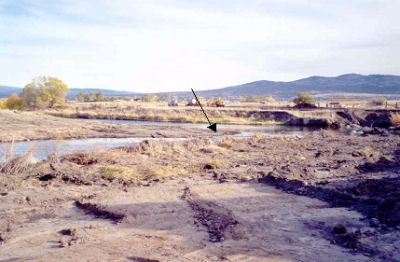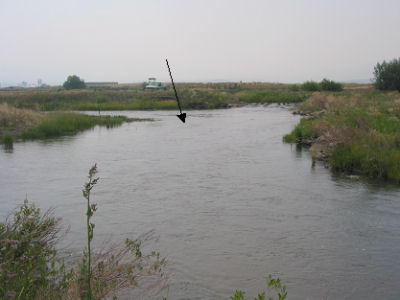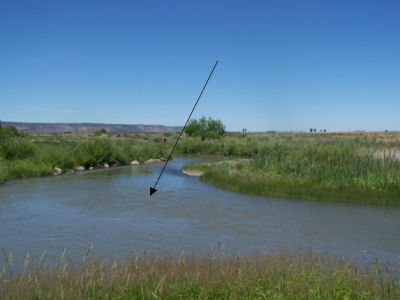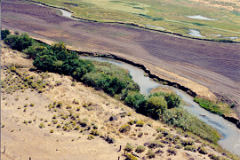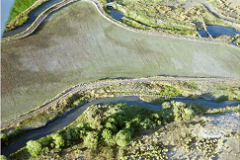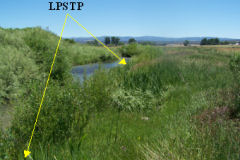Nearly a half mile of a channelized reach of the South Fork Pit River was restored. Old levees were removed and new flood plains were constructed. The project was conceived and managed for Central Modoc R.C.D. by Cliff Harvey in cooperation with Likely Land and Livestock Co. Design details were developed by Salix Applied Earthcare and Cliff Harvey. Primary funding by SWRCB Prop. 204 and generous landowner contributions.
"Besides keeping the projects on time and under budget, Cliff has extremely good communications skills. These projects include many agencies and property owners. Everyone knows what is expected of them and who’s on first. No surprises--good job!" John Flournoy, Likely Land & Livestock Co.
Reach A, before treatment, during installation of brush mattresses, and 3 months after installation. Site is well established and stable in 2006, five years after installation.
